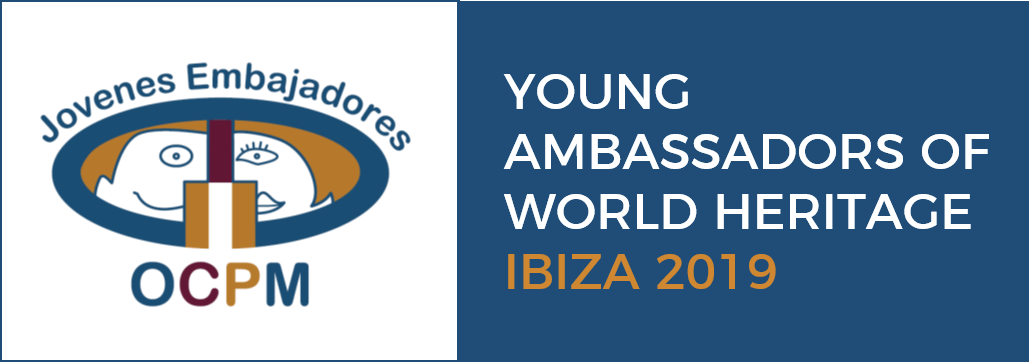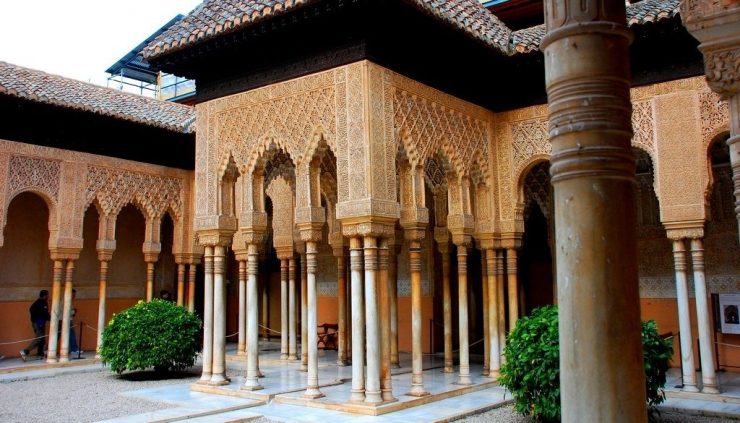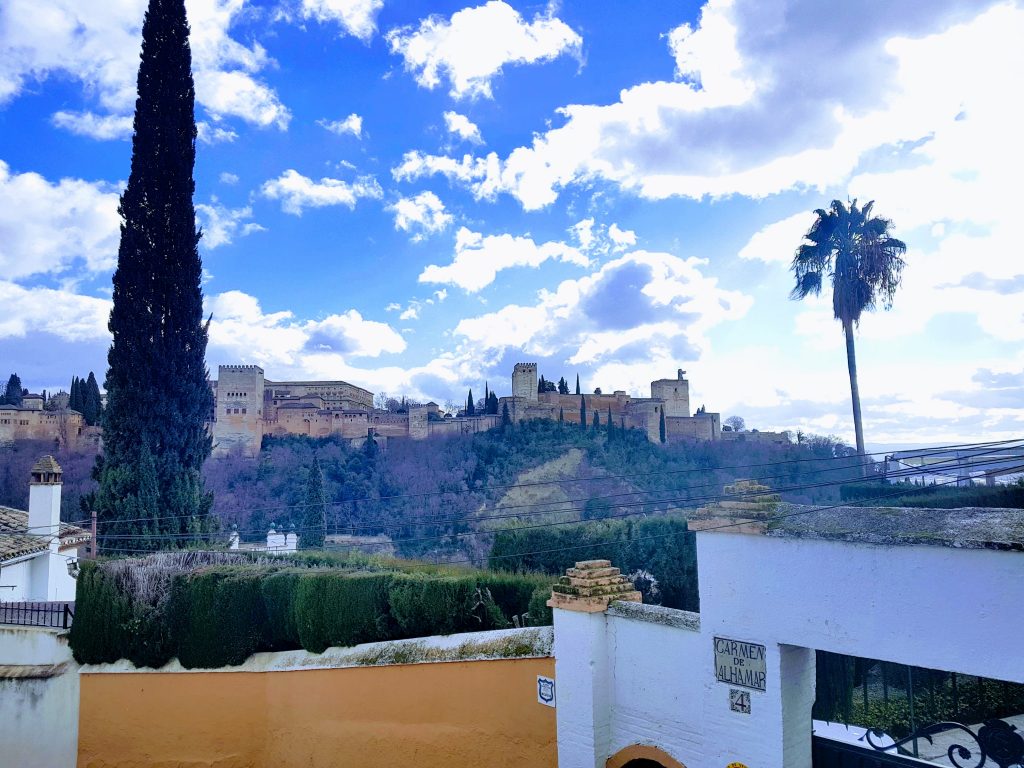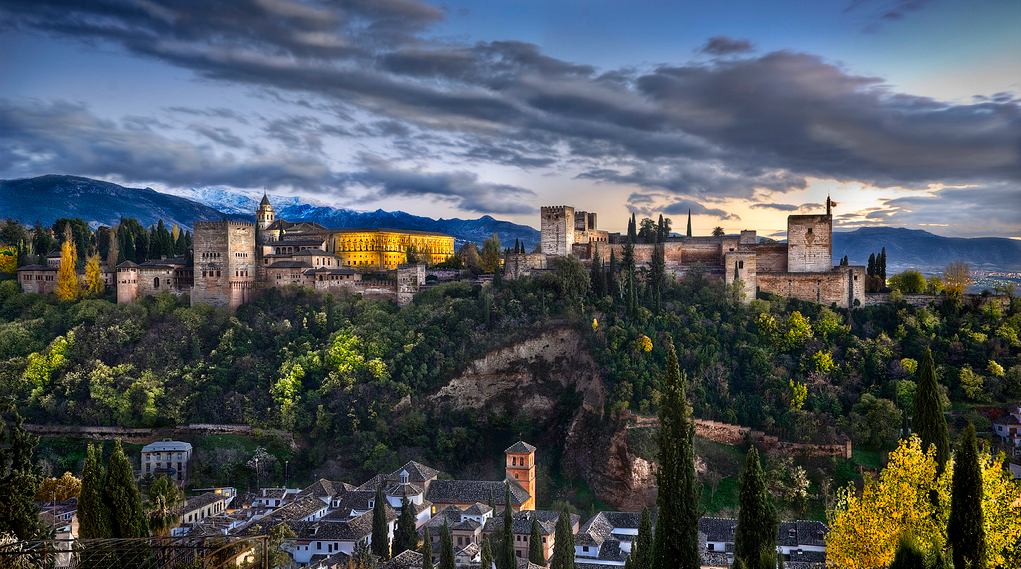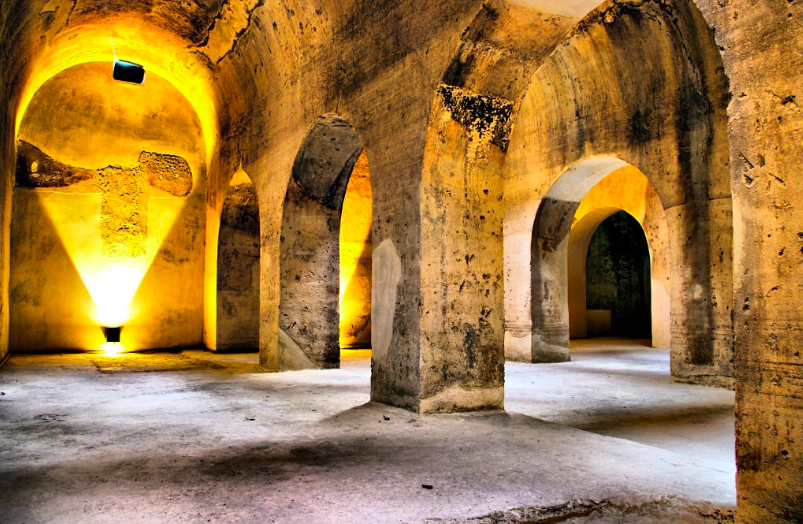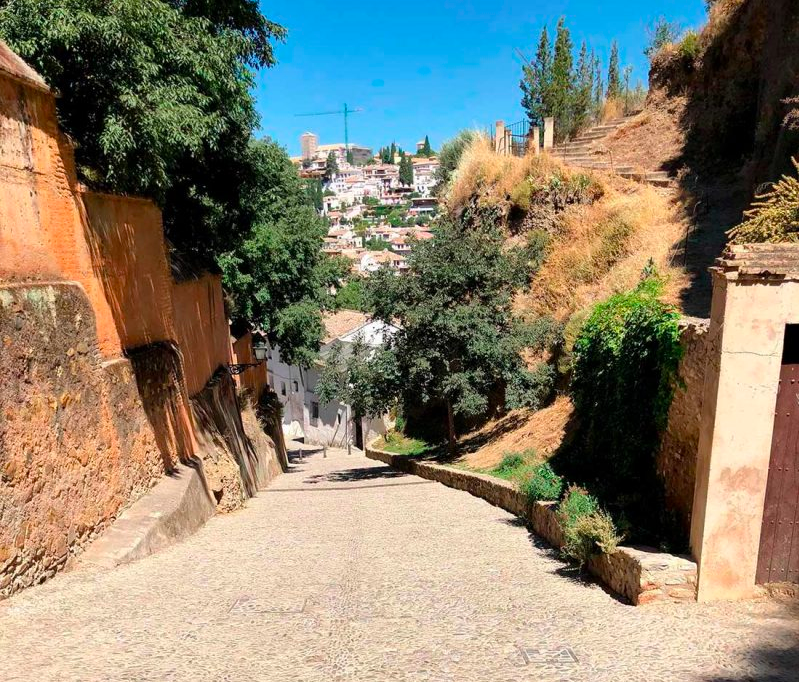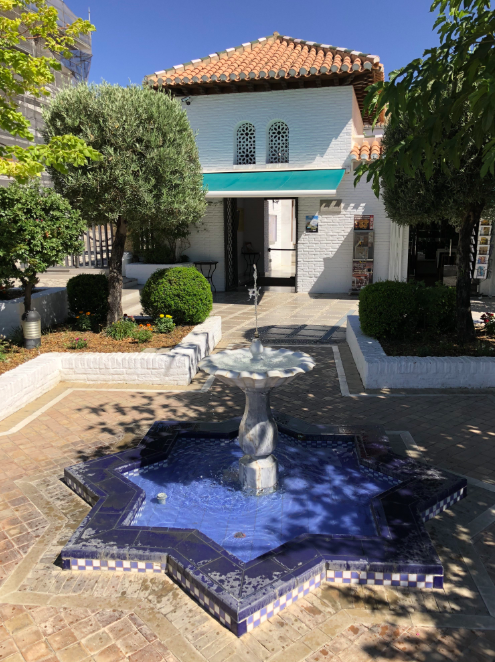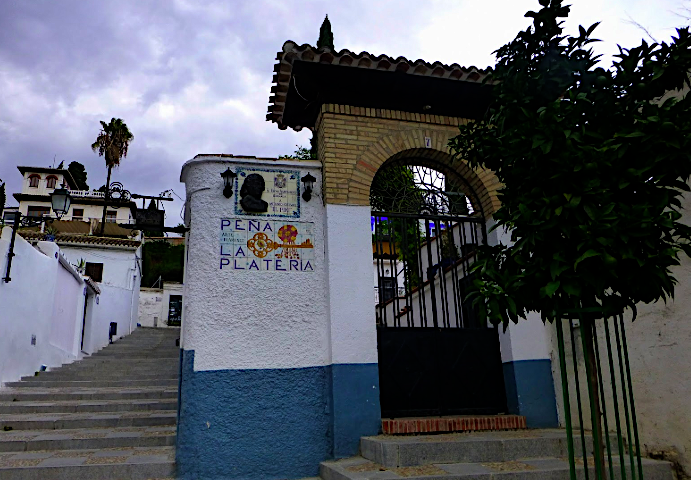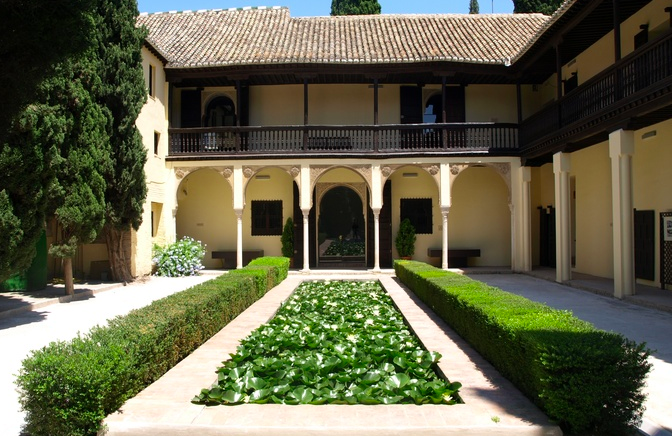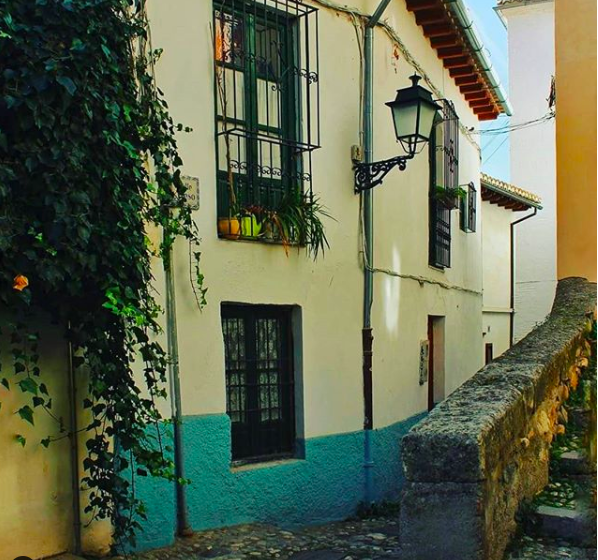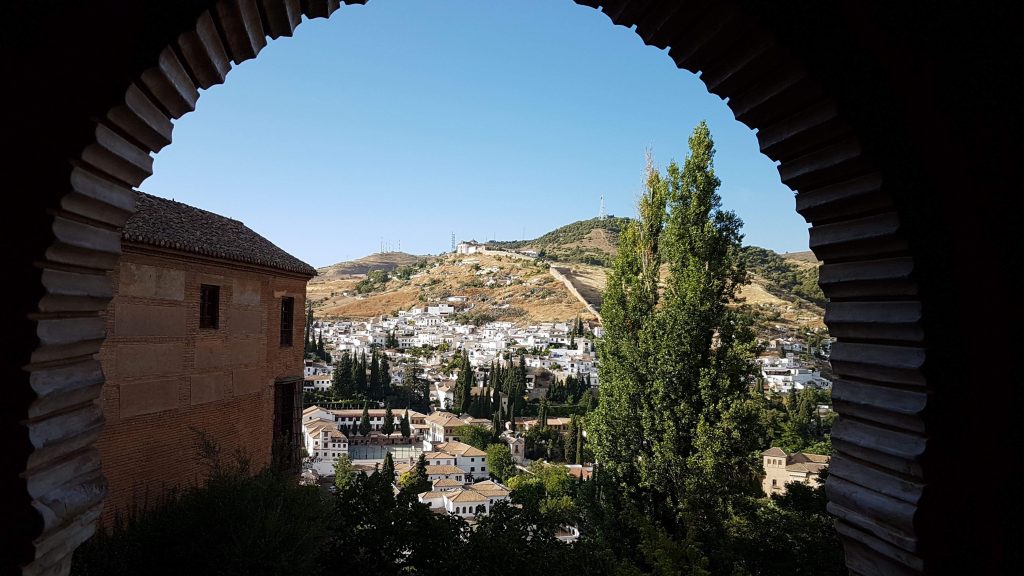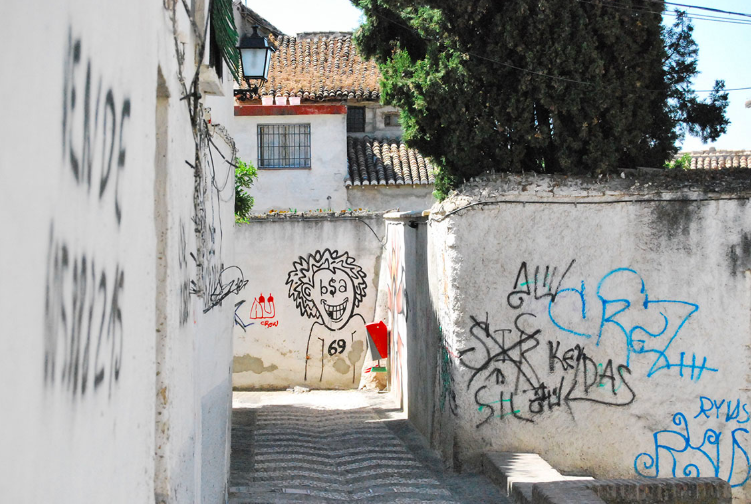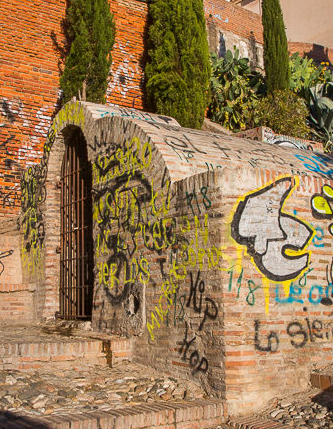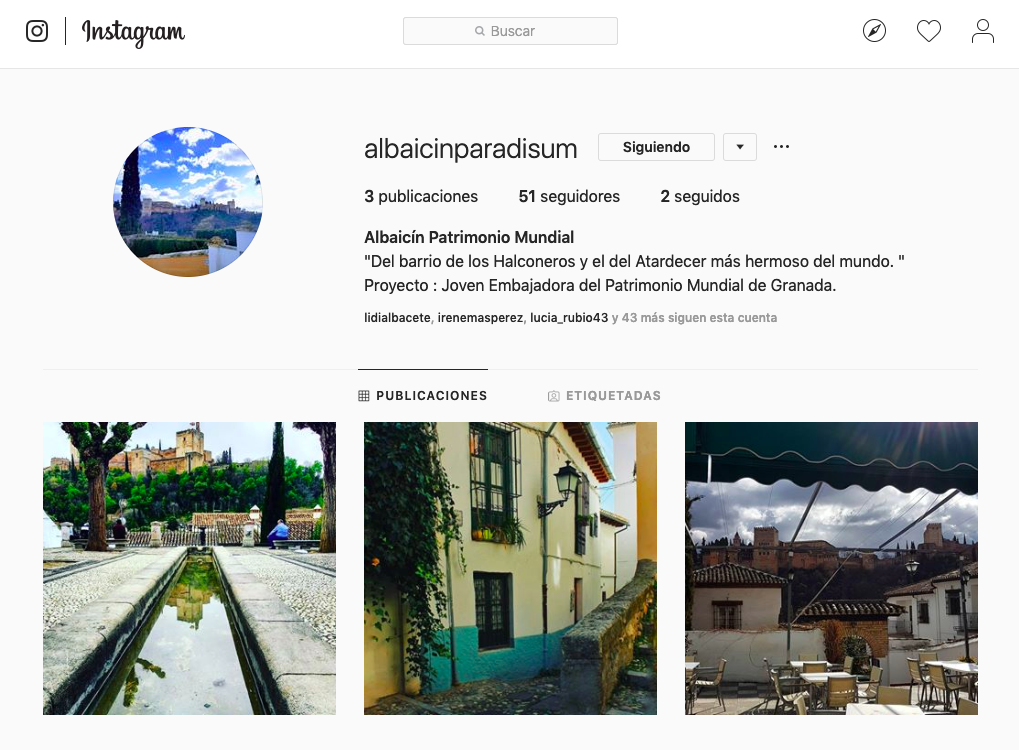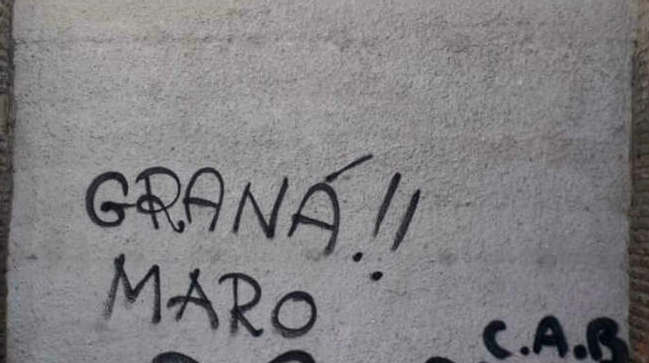 Do you want to read in English? Click here
Do you want to read in English? Click here
 1.Introducción
1.Introducción
Buenos días a todos los presentes, mi nombre es Esperanza Barrales y como joven embajadora del Patrimonio Mundial de la Humanidad de mi preciosa ciudad Granada.
En estas jornadas os traigo una propuesta relacionada con el Albaicín , sé que quizás haya personas que no sepan lo que es o piensen que es un simple barrio de Granada. Vengo a mostraros que no es un barrio cualquiera y que no es tan simple.
El Albaicín es y será historia, culturas, olores, artesanía, flamenco, su gente…
Éste barrio no sólo es un destino turístico , en él también viven generaciones de familias, hay colegios, existen discotecas para los jóvenes, cuenta con bares y plazas emblemáticas donde vecinos y familias se reúnen.
Por supuesto nunca debemos olvidar que la Alhambra no puede vivir sin el Albaicín ni el Albaicín sin la Alhambra.
El Albaicín tiene un pasado Preislámico, Andalusí, Siglos XVI y XIX cuando los cristianos y musulmanes convivían de manera pacífica. A finales del XIX e inicios-mediados del siglo XX muestran un Albaicín en abandono y casi marginal. En los años 60 y 70 muchas familias se marchan a otras zonas de la ciudad.
Al declarar el barrio como Patrimonio Mundial en 1994 se produjo un punto de inflexión en el barrio. Hemos pasado de no tener prácticamente turismo, y ni una sola plaza hotelera a que la mayor actividad económica del barrio sea ahora el Turismo, tanto de visitas como de alojamientos
en toda su diversidad.
2. Desarrollo del proyecto y objetivos.
Nuestros objetivos son acercar de manera diferente a los jóvenes los sitios Patrimonio Mundial utilizando todas las herramientas tecnológicas a su alcance, dar difusión a rutas alternativas con las que disfrutar de un Albaicín diferente, salir de la monotonía de las rutas típicas por las que siempre se lleva al turista. y descubrir un Albaicín de paisajes y paisanaje, aprender a convivir y participar de las actividades del barrio a la vez que contribuir a un turismo sostenible colaborando también en hacer visibles las actitudes incívicas como los graffiti ó las basuras que ensucian las calles.
Nuestras fotos van a mostrar tanto la belleza como las carencias para trasladar también una responsabilidad a los jóvenes de que participen en la conservación de los espacios patrimonio Mundial. Un objetivo clave para nosotros es la concienciación ciudadana a través de la cuenta de Instagram promoviendo un challenge para la limpieza y mantenimiento de nuestro patrimonio.
Como propuesta, la OCPM podría dar un premio anual a algunos jóvenes que se hayan distinguido por su contribución a la mejora de la situación del patrimonio mundial a nivel del vecindario, con propuestas de acogida a los viajeros, personas que quieran participar en las costumbres del Albaicín.
1ªRUTA: ALBAICÍN CONNECTION
Dicha ruta incluye seis puntos claves a visitar : Museo Cuevas del Sacromonte, Abadía del Sacromonte, Cuesta de los Chinos, El camino del Avellano, Bosques de la Alhambra y por último Cuesta de Gomérez.
Esta ruta es para los andarines con buen calzado descubriremos paisajes inéditos que descubren la naturaleza del entorno.
2ªRUTA: CUNA DE ESPIRITUALIDADES
Ésta ruta es un repaso por los diferentes lugares de culto que salpican el barrio. Ya que como con anterioridad hemos citado, el Albaicín es una gran confluencia de culturas.
1.Mezquita Mayor
2.Palacio de los Olvidados
3.Conventos, Iglesias y Monasterios:
-Convento de Santa Isabel la Real.
-Convento de la Inmaculada Concepción.
-Iglesia de San Nicolás.
-Palacio de Dar al-Horra.
-Iglesia de San Miguel Bajo.
-Abadía del Sacromonte.
-Iglesia de Santa Ana.
-Casa de Zafra.
Un ejemplo de las tres religiones encontramos en esta ruta que nos descubre la expresión diferenciada de la espiritualidad en las tres religiones monoteístas del mundo.
3ªRUTA: OÍDO EN EL ALBAICÍN
Las campanas de un convento. El rumor del agua en un aljibe. Idiomas de medio mundo. Una guitarra. Son los sonidos que pueblan el Albaicín. Porque éste es un barrio que se oye. Por eso, conviene pasearlo en silencio y prestando atención a lo que se dice, se escucha, se rumorea.
-Peña la Platería
-Cuevas del Sacromonte
-Centro de Documentación Musical de Andalucía
4ªRUTA: LA DOBLA DE ORO
La Alhambra y el Albaicín unidos por un itinerario cultural y turístico.
En esta ruta el visitante se sumerge por completo en la vida de Granada Nazarí.
-Casa del Chapiz: actualmente éste edificio es la Escuela de Estudios Árabes. Construcción morisca del siglo XVI. Hasta el siglo XX no fue restaurada, recuperando todo su esplendor original.
-El Bañuelo: construido en el siglo XI, es considerado el baño árabe más antiguo de España, éste es uno de los mejores conservados de todo Al-Andalus y el edificio civil más antiguo de la ciudad. Cuenta con 3 salas de baño, fría, templada y caliente.
Se pueden observar las bóvedas con claraboyas que permitían la ventilación y entrada de luz natural en estas salas.
-Casa del Horno de Oro: de los siglos XV y XVI, con estilos mudéjar y nazarí.
-Casa de Zafra: antiguo Palacio Nazarí, construido a finales del siglo XVI.
Esta es una ruta diferente donde encontraremos la mejor expresión de los sonidos del Albaicín “el flamenco” . Oiremos lo más auténtico de éste patrimonio inmaterial de la Humanidad.
3. Presentación cuenta de Instagram
Actualmente contamos con cuenta en instagram con el nombre de @albaicinparidisum, creada hace pocos días y hemos conseguido ya 51 seguidores. El objetivo de la cuenta es difundir nuestro proyecto y hacer llegar a todo el mundo los rincones de nuestro Patrimonio. Un ejemplo de lo que hacemos en nuestra cuenta es esta imagen, de la calle del beso en Granada, en la cual proponemos a nuestros seguidores que la busquen y suban una fotografía dándole un beso a alguien cercano (PADRES, AMIGOS, HERMANOS, PAREJAS…) etiquetando nuestra cuenta.
Cuenta la leyenda que ésta callecita en el siglo XVIII, aún se llamaba la Calle del Conde de Cabra por el aristócrata que después de la conquista se apropió de la parte del Albaicín en la cual estamos.
En esta casa vivía un matrimonio con su hermosa hija, una muchacha tan angelical que todos los vecinos la adoraban. Un día, cuando su madre la fue a despertar, encontró a la niña totalmente inerte.
Horrorizada, gritó ¡Dios mío, está muerta!, llamando a los vecinos, que transformaron el barrio en un solo llanto.
A la noche celebraron el velatorio, en clima de gran tragedia. Pero al día siguiente cuando iban a cerrar el ataúd, y la madre acercó sus labios para dar a su querida hija un desesperado beso, los ojos de la “muchacha muerta” se abrieron lentamente.
Dejando ésta leyenda atrás , los seguidores deberán subir sus mejores fotos que identifiquen los itinerarios que han seguido, los lugares que han descubierto y cada cierto tiempo podemos poner un reto para que lo realicen y pueda ser premiado a nivel local, de secretaría regional ó
por la entidad local. Los premios se pueden referir a visitar otros sitios patrimonio mundial para lo cual necesitaremos una red de colaboración en este proyecto.
4.Conclusión
Motivar a los jóvenes para una mayor concienciación del valor del Patrimonio debe partir desde las escuelas.
Llevando programas específicos y dinámicos (búsquedas del tesoro en el que las pistas son información sobre nuestro patrimonio y los actos vandálicos que lo estropean, así como actuaciones para su limpieza y conservación).
Por último la creación de la cuenta debe ir derivando y mostrando éstas acciones para favorecer el crecimiento y difusión de nuestro proyecto.
Click here to download PPT file: / Pincha aquí para descargarte el PPT http://ibiza.young-ambassadors.net/ppts/Granada.pptx
 1.Introduction
1.Introduction
Good morning to all, my name is Esperanza Barrales and today I come as a young ambassador of my beautiful city Granada.
In these days I bring you a proposal related to the Albaicín , I know that there may be people who don’t know what it is or think it’s a simple neighborhood of Granada. I come to show you that it’s not just any neighborhood and it’s not that simple.
The Albaicín is and will be history , culture, smells, crafts, flamenco , the people…
This neighborhood is not only a tourist destination, it is also home to generations of families, there are schools, clubs for young people, have bars and emblematic squares where families and neighbors gather.
Of course we must never forget that the Alhambra cannot live without the Albaicin, and the Albaicin without the Alhambra.
The Albaicín has a Preislamic past, Andalusí, XVIth and XIXth centuries when Christians and Muslims live together peacefully.
In the late of XIXth century and mid-twentieth century they showed an Albaicín in abandonment and almost marginal.
In the 1960s and 1970s , many families moved to other parts of the city. When the neighborhood was declared World Heritage in 1994, there was a turning point in the neighborhood.
We’ve gone from having practically no tourism, and not even a hotel square, to having the biggest economic activity in the neighborhood is now Tourism, both of visits and lodging in all its diversity.
2. Development of the project and its objectives.
Our objectives are to approach World Heritage sites differently to young people using all the technological tools at their disposal, disseminate alternative routes with which to enjoy a
different Albaicín , to leave the monotony of the typical routes by which always takes the tourist, and discover an Albaicín of landscapes , learn to live together and participate in the activities of the neighborhood while contributing to a sustainable tourism also collaborating in making visible the attitudes disrespectful like the graffiti or the garbage that dirty the streets.
Our photos will show both the beauty and the lack to transfer also a responsibility to young people to participate in the conservation of World Heritage spaces.
A key goal for us is citizen awareness through the Instagram account promoting a challenge for cleaning and maintaining our heritage.
As a proposal the OCPM could give an annual award to some young people who have distinguished themselves for their contribution to the improvement of the situation of the World Heritage at the neighborhood level, with proposal for welcoming travelers, people who want to participate in the customs of the Albaicin.
1ªROUTE: ALBAICÍN CONNECTION
This route include six key points to visit: Museo Cuevas del Sacromonte, Abadía del Sacromonte, Cuesta de los Chinos, El camino del Avellano, Bosques de la Alhambra y por último Cuesta de Gomérez.
This route is for walkers with good footwear we will discover unpublished landscapes that discover the nature of the surroundings.
2ªROUTE: CUNA DE ESPIRITUALIDADES / ESPIRITUALIDADES CRADLE
This route is a review of the different places of worship that dot the neighborhood. As we have already mentioned, the Albaicin is a great confluence of cultures.
1.Mezquita Mayor
2.Palacio de los Olvidados
3.Conventos, Iglesias y Monasterios:
-Convento de Santa Isabel la Real.
-Convento de la Inmaculada Concepción.
-Iglesia de San Nicolás.
-Palacio de Dar al-Horra.
-Iglesia de San Miguel Bajo.
-Abadía del Sacromonte.
-Iglesia de Santa Ana.
-Casa de Zafra.
An example of the three religions we find in this route that we discover the differentiated expression of spirituality in the three monotheistic religions of the world.
3ªROUTE: OÍDO EN EL ALBAICÍN / EAR IN THE ALBAICIN
The bells of a convent. The rumor of water in a cistern. Languages of half the world. A guitar.
They are the sounds that populate the Albaicin. Because this is a neighborhood that you hear. Therefore, it is advisable to walk it in silence and paying attention to what is said, heard, rumored..
-Peña la Platería
-Cuevas del Sacromonte
-Centro de Documentación Musical de Andalucía
4ºROUTE: DOBLA DE ORO / IT TURNS OF THE GOLD
On this route the visitor is completely immersed in the life of Granada Nazarí.
-Casa del Chapiz: currently this building is the School of Arab Studies. Moorish construction of the sixteenth century. Until the 20th century it was not restored, recovering all its original splendor.
-El Bañuelo: built in the 11th century, is considered the oldest Arab bath in Spain, this is one of the best preserved of the all Al-Andalus and the oldest civil building in the city. It has three bathrooms cold, warm and hot.
You can see the vaults with skylights that allowed the ventilation and entrance of natural light in these rooms.
-Casa del Horno de Oro/ Gold Oven House: from the 15th and 16th centuries, with Mudejar and Nasrid styles.
-Casa de Zafra / House of Zafra: former Nasrid Palace, built at the end of the 16th century.
This is a different route where we will find the best expressions of the sounds of the Albaicin “the flamenco”. We will hear the most authentic of this intangible heritage of humanity.
3. Instagram Account.
Currently we have Instagram account with the name of @albaicinparadisum,, created a few days ago and we have already obtained 51 followers .
The goal of the account is to spread our project and to reach all the corners of our Heritage.
An example of what we do on our account is this image, of the street of the Kiss in Granada, in which we propose our followers to look for it and upload a photograph giving a kiss to someone close (as parents, friends, couples, brothers…) labeling our account.
Legend has it that this little street in the eighteenth century was still called Count de Cabra Street by the aristocrat who after the conquest took over the part of the Albaicin in which we are.
In this house lived a marriage with his beautiful daughter, a girl so angelic that all the neighbors adored her.One day, when her mother went to wake her, she found the child completely inert.
Horrified, she shouted, My God, she is dead! calling the neighbors, who transformed the neighborhood into a single cry.
At night they held the wake, in a climate of great tragedy.But the next day when they were closing the coffin, and the mother put her lips close to give her beloved daughter a desperate kiss, the eyes of the «dead girl» slowly opened.
Leaving this one legend behind, the followers should upload their best photos that identify the itineraries they have followed, the corners they have discovered and from time to time we can challenge them to do so and be rewarded locally, by the local authority. The awards can refer to visiting other world heritage sites for which we will need a collaborative network in this project.
4. Conclusion.
Encouraging young people to become more aware of the value of heritage must start from schools.
Conducting specific and dynamic programs (treasure searches in which the clues are information about our heritage and the vandalism that spoil it, as well as actions for its cleaning and conservation).
Finally, the creation of the account should be derived and showing these actions to favor the growth and diffusion of our project.
